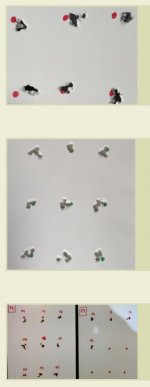Hello folks,
Im just somehow getting bored with the general "subMOA" accuracy rule.
Started to brainstorm about the "sub0.5MOA" accuracy class. Lets clarify, it doesnt mean some one group per year on a lucky day but consistent, moreless "all the time" sub 0.5 MOA grouping. I set my goal to 100m with no wind for this.
For the first is there some so hell accurate air rifle on the market? Mostly talking about FAC rifles but not super high energy, maybe up to 40-60J (to make it easier to hold for the 0.5 MOA accuracy) but sub12 could be also.
Im sceptic that its so easy just to order a rifle and thats all. Im ready to experiment, modify, do custom rifle parts, etc. Basically any tuning.
But if you would be an engineer, and you have been told "hey make me a sub 0.5MOA air rifle" what would be your starting point. What rifle you would get to start from as a baseline? (no, please just dont write FX impact)
I have a Prophet 2 in .25 and its capable for 0.7 MOA groups pretty easily, without any custom special modifications. Maybe it would be a great rifle to start with with a .22 barrel. I believe the .22 is similarly accurate as the .25.
What would you start with and what is your opinion in general? Please not that this topic is meant to be "scientific" and sophisticated. So try to aim your comments this way.
Thank you.
Im just somehow getting bored with the general "subMOA" accuracy rule.
Started to brainstorm about the "sub0.5MOA" accuracy class. Lets clarify, it doesnt mean some one group per year on a lucky day but consistent, moreless "all the time" sub 0.5 MOA grouping. I set my goal to 100m with no wind for this.
For the first is there some so hell accurate air rifle on the market? Mostly talking about FAC rifles but not super high energy, maybe up to 40-60J (to make it easier to hold for the 0.5 MOA accuracy) but sub12 could be also.
Im sceptic that its so easy just to order a rifle and thats all. Im ready to experiment, modify, do custom rifle parts, etc. Basically any tuning.
But if you would be an engineer, and you have been told "hey make me a sub 0.5MOA air rifle" what would be your starting point. What rifle you would get to start from as a baseline? (no, please just dont write FX impact)
I have a Prophet 2 in .25 and its capable for 0.7 MOA groups pretty easily, without any custom special modifications. Maybe it would be a great rifle to start with with a .22 barrel. I believe the .22 is similarly accurate as the .25.
What would you start with and what is your opinion in general? Please not that this topic is meant to be "scientific" and sophisticated. So try to aim your comments this way.
Thank you.

